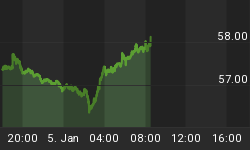Once the world leader in digital payments and technological innovation, the U.S. payments ecosystem is fast losing its leadership and increasingly at risk of becoming a bona fide dinosaur.
Back in March, financial solutions company ACI Worldwide (NASDAQ:ACIW) revealed just how badly the U.S. is lagging in digital payments. Despite being the largest economy in the world by some distance, the U.S. only ranks 9th in digital real time payments with the country processing only $1.2B in digital payments in 2020, behind emerging economies like Nigeria and India which processed $1.9B and $25.5B, respectively.
Digital real time payments are instant payments processed using the newer ISO 20022 message format. These payments are not only quicker and cheaper but also allow much more data than legacy payments like credit cards, debit cards,most ACH payments, EFTs, Swift transfers, checks, and cash. The Covid-19 pandemic aptly demonstrated how antiquated US payments have become with many systems struggling to keep up with rapid transfers of payments, loans, and government stimulus. This highlighted how the Fed has dropped the ball by failing to take decisive and effective action on real time payments in two decades.
And the Fed is at it yet again. At a time when Beijing has officially rolled out the digital yuan, Washington is still engaging in hand wringing with no clear timelines when a digital dollar might make its long-awaited debut--if ever.
China’s central bank has begun rolling out the e-renminbi--an all-digital version of its paper currency that can be accessed and accepted by merchants and consumers without an internet connection, credit or even a bank account--in cities across the country.
Digital yuan
No less than six big state banks have been quietly promoting the digital yuan or e-CNY, a state-sponsored digital currency primarily focused on domestic use meant to replace coins and cash in circulation. Apparently, the People’s Bank of China (PBOC) has been working on e-CNY since 2014.
The PBOC has been carrying out a number of trials on digital yuan across major cities in China though a national rollout is yet to happen. The pilot projects are being conducted in the form of lotteries whereby the PBOC is handing out "red envelopes"of free digital cash or discounts to online shoppers ahead of a May 5 shopping festival. Interestingly, digital wallets can be bundled with a dozen popular apps including JD.com, Meituan, Didi and Bilibili, but conspicuously can not be linked to Alipay or WeChat. In other words, none of the participating banks can transfer digital yuan between their digital wallets and Alipay or WeChat.
Apparently, Beijing does not like the fact that WeChat Pay and Alipay happen to own an ocean of data, which probably makes sense considering that Big data is wealth, and whoever owns data thrives. The two dominant platforms control a combined 94% of China's online payment market.
More than $5 billion in e-CNY transactions have already been processed, and China has moved to the next step and opened its digital currency up to foreigners. Indeed, authorities are expecting to let the world test drive its new currency next year when Beijing hosts the Winter Olympic Games.
In sharp contrast, the U.S. appears nowhere close to completing its multi-year exploration into the possibility of an e-dollar let alone releasing it. In fact, an upcoming Federal Reserve paper on a potential U.S. digital currency provides no position on whether the central bank will, or even should, create one.
Other countries are clearly moving in China’s direction. Australia, Malaysia, Singapore and South Africa plan to launch the world’s first cross-border central bank digital currency exchange program while the Bahamas recently announced the integration of its digital Sand Dollar into a stock exchange.
“The reason you could say the U.S. is behind in the digital currency race is I don’t think the U.S. is aware there is a race. A lot of policymakers are looking at it and concerned…but even with that I just don’t think there’s this sense of urgency because the risk from China is not an immediate threat, ” Yaya Fanusie, an Adjunct Senior Fellow at the Center for a New American Security, and a former CIA analyst, has told TIME in an interview.
Digital currencies are increasingly being viewed as the next wave in the evolution of the nature of money in the digital economy.
Potential blow
How soon can we expect to see a central bank-issued digital currency (CBDC) by the Fed? The prognosis is not good.
According to PwC’s inaugural CBDC global index, the U.S. ranks 18th in the world, trailing the likes of China, Sweden, South Korea, Bahamas, Ecuador, Eastern Caribbean and Turkey.
Harvard economics professor Kenneth Rogoff estimates that the U.S. could be at least a decade away from issuing a CBDC. In an op-ed, Rogoff argues that Beijing’s modernization of the country’s financial markets including a reduction or removal of its currency controls “could deal the dollar’s status a painful blow.”
















